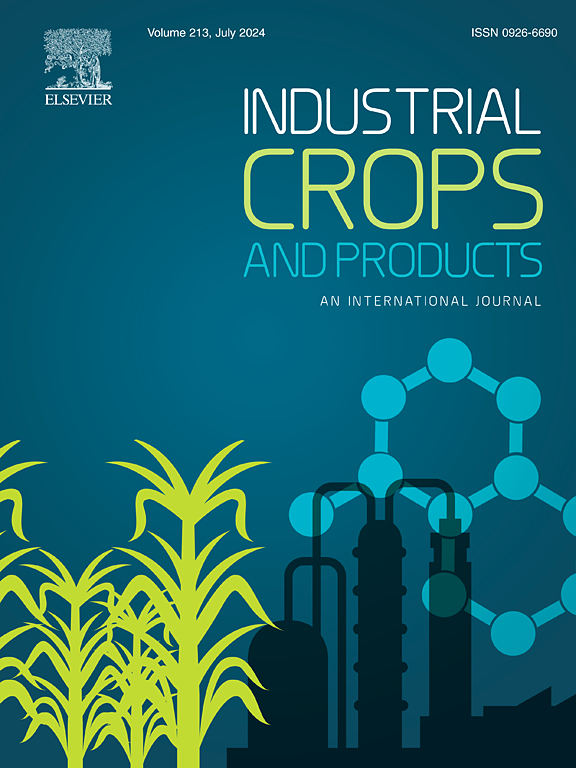Quantifying cotton source-sink relationships under layered phosphorus placement with fertigation management
IF 5.6
1区 农林科学
Q1 AGRICULTURAL ENGINEERING
引用次数: 0
Abstract
Cotton yield formation is dependent on source-sink capacity and relationships. The present study aimed to investigate the effects of layered phosphorus (P) application combined with drip irrigation on cotton source-sink relationships and yield formation. Two-year field experiments were conducted, employing three P layered application treatments (D1: 5 cm + 15 cm, D2: 15 cm + 25 cm, D3: 5 cm + 15 cm + 25 cm) and three drip irrigation application rates (B25: 0.25/0.75, B50: 0.5/0.5, B75: 0.75/0.25). The control (CK) treatment consisted of 50 % P applied pre-sowing into the 0–25 cm soil depth and 50 % applied through drip irrigation. The results showed that, under B50 and B75 phosphate fertilizer basal dressing ratios, layered fertilization treatments significantly increased source (sink) dry matter (Wmax) by 16.93 %-41.30 % (source) and 10.48 %-35.74 % (sink) compared with CK. The maximum source and sink growth rate (Smax) of layered fertilization treatments was also significantly elevated, showing increases of 23.94 %-54.22 % (source) and 10.83 %-41.59 % (sink) over CK. The Wmax, Smax, and yield of the layered fertilization treatments exhibited a trend of D2 >D3 >D1 and B50 >B75 >B25. The two-year average yields of the B50(75)D2(D3) treatments were significantly higher than CK, with increases ranging from 6.02 % to 17.65 %. Notably, the B50D2 treatment exhibited a prolonged source growth period, higher source and sink dry matter accumulation, a more balanced source and sink partitioning index, and a relatively balanced source-sink relationship, resulting in higher yields compared with other treatments. Therefore, the B50D2 treatment is recommended as an effective P precision fertilization strategy for cotton cultivation in Xinjiang.
分层施磷与施肥管理下棉花源库关系的定量研究
棉花产量的形成取决于源库能力和关系。本研究旨在探讨层状磷与滴灌配合施用对棉花源库关系及产量形成的影响。采用3种P层施处理(D1: 5 cm + 15 cm, D2: 15 cm + 25 cm, D3: 5 cm + 15 cm + 25 cm)和3种滴灌施用量(B25: 0.25/0.75, B50: 0.5/0.5, B75: 0.75/0.25)进行了为期2年的田间试验。对照(CK)处理为:播种前施50% %磷肥,0 ~ 25 cm土层深度施50% %磷肥;结果表明,在B50和B75磷肥基肥配比下,层状施肥处理显著提高了源(库)干物质(Wmax),比对照提高了16.93 % ~ 41.30 %(源)和10.48 % ~ 35.74 %(库)。分层施肥处理的最大源库生长率(Smax)显著高于对照,分别提高23.94 % ~ 54.22 %(源)和10.83 % ~ 41.59 %(库)。分层施肥处理的Wmax、Smax和产量表现为D2 >;D3 >;D1和B50 >;B75 >B25。B50(75)D2(D3)处理的2年平均产量显著高于对照,增产幅度为6.02 % ~ 17.65 %。值得注意的是,B50D2处理源生长期更长,源库干物质积累量更高,源库分配指数更平衡,源库关系相对平衡,产量高于其他处理。因此,推荐B50D2处理作为新疆棉花有效的磷精确施肥策略。
本文章由计算机程序翻译,如有差异,请以英文原文为准。
求助全文
约1分钟内获得全文
求助全文
来源期刊

Industrial Crops and Products
农林科学-农业工程
CiteScore
9.50
自引率
8.50%
发文量
1518
审稿时长
43 days
期刊介绍:
Industrial Crops and Products is an International Journal publishing academic and industrial research on industrial (defined as non-food/non-feed) crops and products. Papers concern both crop-oriented and bio-based materials from crops-oriented research, and should be of interest to an international audience, hypothesis driven, and where comparisons are made statistics performed.
 求助内容:
求助内容: 应助结果提醒方式:
应助结果提醒方式:


